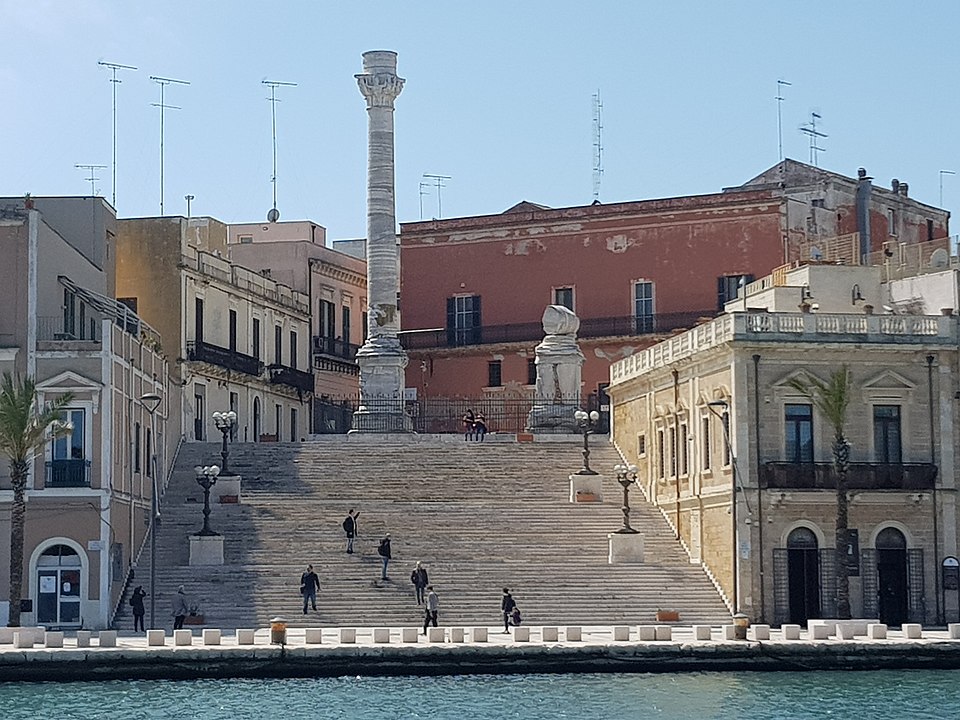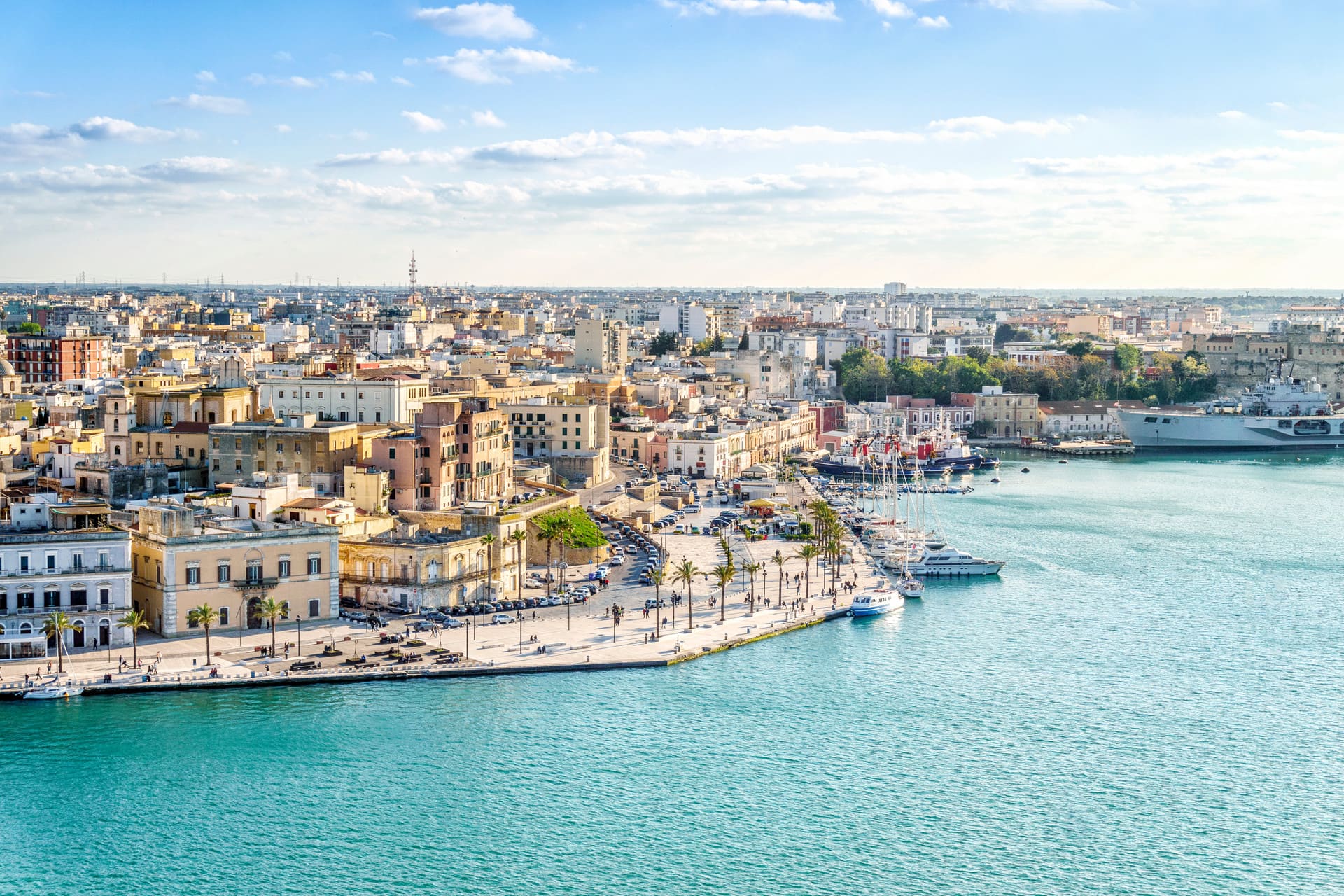Brindisi: a dive into history.
The best way to begin a tour of Brindisi is to get inspired by Dante’s Divine Comedy, starting from his meeting with Virgil.
It was here that the Latin poet Publio Virgilio Marone spent his final days, and the imposing staircase that stands out on the horizon – when looking at Brindisi from the sea – carries his name.

Virgil’s staircase leads to the Roman columns, the symbol of the city and wrongly thought to be the end of the Appian Way. Only one of the two columns, measuring almost 19 meters tall, is still standing. The other fell in 1528 and laid there for over a century before being donated to the city of Lecce.
As soon as you set foot in the city that is the gateway to Salento, you’ll see immediately that the traces of many civilizations have been preserved to be discovered and admired.
Brindisi is a melting pot of peoples and cultures, bearing witness to historical eras and events with its rich collection of buildings, churches, monuments and symbols that fill the eyes and hearts of tourists.
Walking along the ancient walls built by Mark Antony in Roman times, you’ll be amazed by the Medieval architecture of the Porta Mesagne. The oldest city gate was built in 1243 at the behest of Frederick II, Duke of Swabia, who wanted to give a triumphal entrance to Brindisi.
The castles

The majestic Swabian Castle was also built on the orders of Frederick II of Swabia, standing close to the historical centre and overlooking the harbour in all its grandeur.
Recently, the Municipality of Brindisi made an agreement with the Italian Military Navy to make the castle come alive again with new cultural non-profit activities.
While we wait for the new programme of events, it is possible to visit the Alfonsino Castle, which was built in 1481 by the King of Naples, Ferdinand I of Aragon at the initiative of his son, Alfonso Duke of Calabria. This beautiful castle is located on the island of Sant’Andrea, just outside the external port of Brindisi. It suffered various forms of damage over the centuries and was almost forgotten after being used as a military hospital between the 1700s and the 1800s.
It was finally reopened to the public in May 2021 and today it is a must-see place to visit!
And now time for some fun …
To discover Brindisi’s more modern and vibrant side, choose between shopping in Corso Umberto I or enjoying an aperitif around Piazza Cairoli.
Brindisi is a culinary destination you simply can’t miss!
Not just for the delicious traditional food such as the pittole (fried pasta bites with capers, tomatoes and olives), fried mussels and the traditional fava beans with chicory, but also for the restaurants that combine tradition with innovation. At Trattoria Pantagruele, for example, chef Fabrizio Palma offers delicacies worthy of an entry in the Michelin Guide, such as Brindisi rockfish and octopus with potatoes and mint.
As if this wasn’t reason enough to organise your “trip through time”, Air Dolomiti is now operating a new route between Munich and Brindisi.




